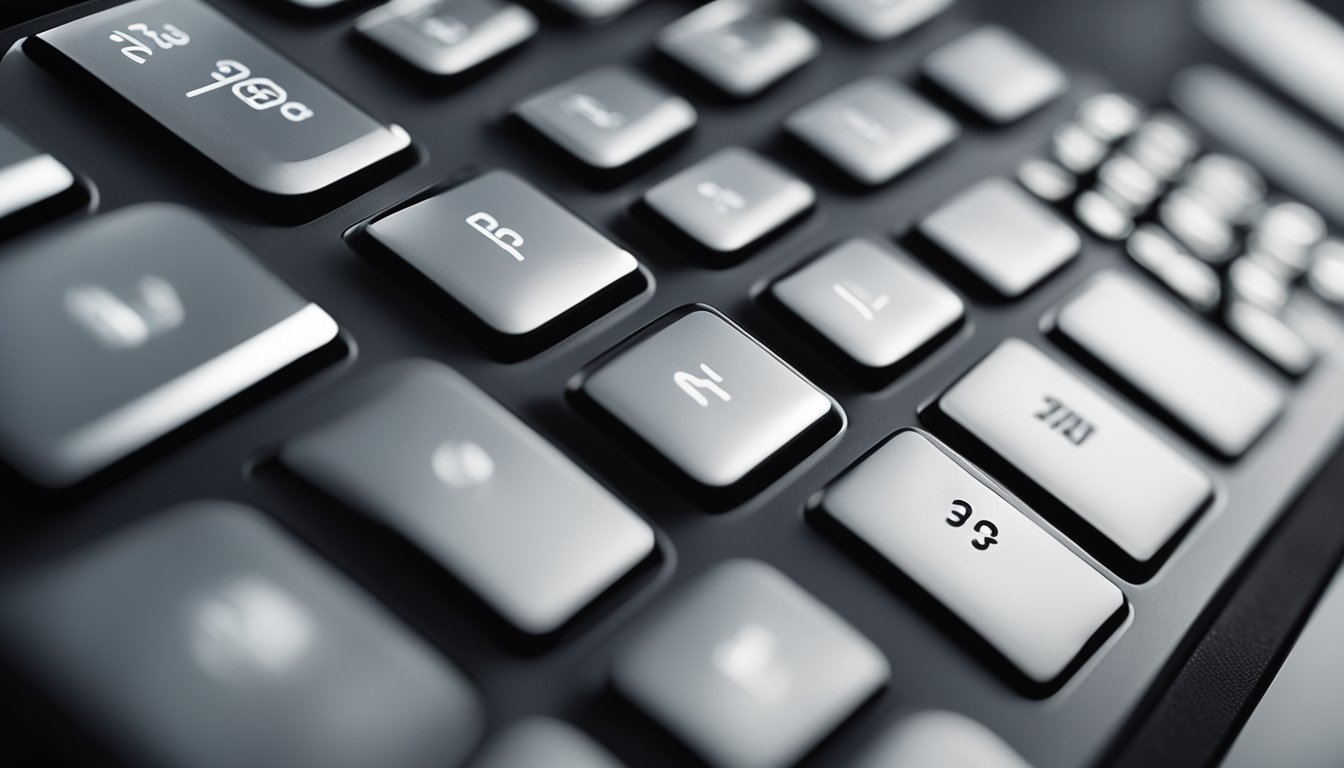Contact
Write to Us And We Would Be Happy to Advise You.
Do you have any questions, or would you like to speak directly with a representative?
By peter
If you’re looking for a reliable and user-friendly input device for your electronic device, a capacitive membrane keypad may be the solution you need. This type of keypad utilizes capacitive touch technology, which means it responds to the electrical charge of your fingertips. The result is a highly responsive and accurate input method that can be customized to fit your specific needs.

Capacitive membrane keypads are commonly used in a variety of electronic devices, including medical equipment, industrial machinery, and consumer electronics. They offer a number of advantages over traditional mechanical keypads, including improved durability, resistance to wear and tear, and easy customization. Additionally, capacitive keypads can be designed with a variety of features, such as backlighting, tactile feedback, and custom graphics, to meet the unique needs of your application.

If you are looking for a reliable and low-cost solution for your input device needs, capacitive membrane keypads may be the answer you are looking for. These keypads are widely used in various applications such as medical devices, industrial control panels, and consumer electronics.
Capacitive membrane keypads work by sensing the changes in capacitance when a user touches the surface of the keypad. The keypad is made up of multiple layers of conductive materials, separated by a dielectric layer. When a user touches a key, the capacitance between the conductive layers changes, and the keypad controller detects this change and registers the key press.
One of the advantages of capacitive membrane keypads is their durability. They are resistant to wear and tear, making them ideal for applications that require frequent use. They are also easy to clean and maintain, making them suitable for use in environments where hygiene is important.
Another advantage of capacitive membrane keypads is their flexibility in design. They can be customized to meet specific requirements, including the number and layout of keys, backlighting, and tactile feedback. This flexibility makes them suitable for a wide range of applications.
In summary, capacitive membrane keypads are a reliable and cost-effective solution for input devices. Their durability, flexibility in design, and ease of maintenance make them a popular choice for various applications.

When designing a capacitive membrane keypad, there are several key factors to consider to ensure optimal performance and user experience. These include material selection, electrical layout, and tactile feedback.
Choosing the right materials for your keypad is crucial to its overall durability and functionality. The membrane layer should be made of a flexible, non-conductive material such as polyester or polycarbonate. The conductive layer should be made of a conductive material such as copper or silver, and the adhesive layer should be strong enough to hold the layers together while remaining flexible.
The electrical layout of the keypad is also important in ensuring proper functionality. The conductive layer should be designed in a way that allows for easy and reliable contact with the membrane layer. The layout should also be optimized to reduce the chance of ghosting or false triggering.
Providing tactile feedback to the user is essential for a positive user experience. This can be achieved through the use of embossed or textured buttons, or through the use of haptic feedback. Haptic feedback can be generated through the use of a vibration motor or piezoelectric element, providing a physical sensation to the user when a button is pressed.
By carefully considering these design factors, you can ensure that your capacitive membrane keypad provides reliable and intuitive user interaction.
The manufacturing of capacitive membrane keypads involves several processes. The first step is printing the circuit pattern onto a flexible substrate material, such as polyester or polycarbonate. The printing process uses conductive ink, which is applied to the substrate using a screen printing method. This ensures that the circuit pattern is accurately and precisely printed onto the substrate.
Once the circuit pattern is printed, the substrate is then cut into individual pieces using a laser cutting machine. The laser cutting machine ensures that the pieces are cut with precision and accuracy, ensuring that the keypads are uniform in size and shape.
After the printing and cutting process, the individual pieces are assembled to create the final keypad. The assembly process involves placing the printed substrate onto a base layer, which is typically made of a non-conductive material. The base layer provides support for the circuit pattern and ensures that the keypad is stable and durable.
The next step is to add a protective layer on top of the printed circuit pattern. This layer is typically made of a clear, thin film material, such as polyester or polycarbonate. The protective layer helps to prevent wear and tear on the keypad, ensuring that it remains functional over time.
Finally, the keypad is attached to a PCB (Printed Circuit Board) using a connector, completing the manufacturing process. The PCB connects the keypad to the electronic device, allowing the user to input commands and control the device.
In summary, the manufacturing of capacitive membrane keypads involves printing the circuit pattern onto a flexible substrate, cutting the substrate into individual pieces, assembling the keypad with a base layer and protective layer, and attaching it to a PCB. The process ensures that the keypads are accurate, durable, and functional, making them a reliable input method for electronic devices.
When it comes to integrating a capacitive membrane keypad into your electronic device, you need to consider the electrical connection. The keypad requires a power supply and a data connection to the device’s microcontroller. The power supply is usually provided through a ribbon cable connected to the keypad. The data connection can be established using a variety of methods, including serial communication, I2C, or SPI.
It is essential to ensure that the electrical connection is properly made, and the keypad is correctly wired to the microcontroller. Any loose connections or incorrect wiring can lead to malfunctioning of the keypad and affect the overall performance of the device. A good practice is to use a multimeter to check the continuity of the connections and verify that the voltage levels are within the specified range.
The software integration of the capacitive membrane keypad is also crucial for its proper functioning. The microcontroller needs to be programmed to recognize the keypad’s input and respond accordingly. This involves setting up the appropriate GPIO pins, configuring the communication protocol, and defining the key mapping.
The programming can be done using various software development tools, depending on the microcontroller used. The most common programming languages used are C and C++, but other languages like Python can also be used. It is essential to follow the manufacturer’s guidelines and recommended practices to ensure that the software is optimized for the keypad’s performance.
In conclusion, integrating a capacitive membrane keypad into your electronic device requires careful consideration of both the electrical connection and software integration. Proper attention to these aspects will ensure that the keypad performs optimally and provides a seamless user experience.
Capacitive membrane keypads are widely used in various industries due to their durability, flexibility, and ease of use. Here are some common applications and use cases where capacitive membrane keypads are used:
Capacitive membrane keypads are commonly used in consumer electronics such as mobile phones, tablets, and remote controls. The sleek design and ease of use make them an attractive option for manufacturers. These keypads are also highly responsive and can withstand frequent use, making them ideal for devices that are used frequently.
Capacitive membrane keypads are also used in the medical industry for equipment such as hospital beds, patient monitors, and diagnostic devices. The keypads are easy to clean and disinfect, making them ideal for use in a hospital environment. They are also highly reliable and can withstand heavy use, making them a popular choice for medical equipment.
Capacitive membrane keypads are commonly used in industrial control systems such as factory automation equipment, HVAC systems, and security systems. The keypads are highly durable and can withstand harsh environments, making them ideal for use in industrial settings. They are also highly responsive and can be customized to meet the specific needs of the application.
In summary, capacitive membrane keypads are versatile and widely used in various industries. Their durability, flexibility, and ease of use make them an attractive option for manufacturers and end-users alike.
Capacitive membrane keypads are known for their durability and low maintenance requirements. With no moving parts, these keypads are less prone to wear and tear, making them ideal for applications that require frequent use.
To keep your capacitive membrane keypad in good condition, simply wipe it down with a soft, dry cloth regularly. Avoid using abrasive cleaners or solvents, as they can damage the surface of the keypad.
In addition to regular cleaning, it is important to protect your keypad from excessive moisture and extreme temperatures. While capacitive membrane keypads are designed to withstand a range of environmental conditions, exposing them to prolonged exposure to moisture or extreme temperatures can cause damage.
Overall, with proper care and maintenance, a capacitive membrane keypad can provide reliable and long-lasting performance for a wide range of applications.
Do you have any questions, or would you like to speak directly with a representative?